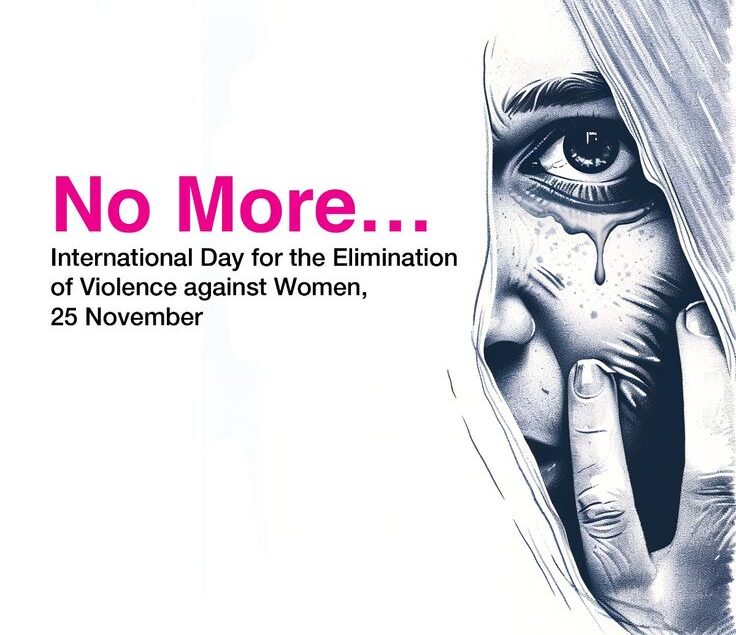“7 Powerful Reasons Why the International Day for the Elimination of Violence Against Women is Vital for a Better World”
All About the International Day for the Elimination of Violence Against Women
The International Day for the Elimination of Violence Against Women is observed annually on November 25th. This day was established by the United Nations to raise awareness about the global epidemic of violence against women and girls. It serves as a call to action for governments, organizations, and individuals to take concrete steps toward ending all forms of gender-based violence, including physical, sexual, and emotional abuse.
Violence against women and girls is a pervasive issue that affects millions of people worldwide, regardless of age, race, or socioeconomic background. The observance of this day seeks to shed light on the widespread nature of violence, while also promoting discussions on solutions and support systems for survivors. It is an essential day for raising awareness, educating communities, and advocating for legal protections and services that empower women to live free from violence.
History of the International Day for the Elimination of Violence Against Women
The observance of this day has its roots in the 1960 assassination of the Mirabal sisters, three political activists in the Dominican Republic who were killed by the regime of Rafael Trujillo. Their courage and determination to stand up against oppression inspired the creation of this day. The United Nations General Assembly declared November 25th as the International Day for the Elimination of Violence Against Women in 1999, following a recommendation by the UN Commission on the Status of Women.
The day was chosen to honor the Mirabal sisters—Patria, Minerva, and María Teresa—who fought for justice and human rights at great personal cost. In the years since, this day has grown in significance, drawing attention to the global struggle against violence toward women and pushing for concrete policy reforms.
Significance of the International Day for the Elimination of Violence Against Women
- Raising Awareness: The main goal of this day is to raise awareness about the scale and impact of violence against women and girls. It brings attention to the fact that one in three women worldwide experiences physical or sexual violence, often by an intimate partner.
- Advocacy for Legal Protections: This day serves as an advocacy tool to push for stronger laws and legal frameworks that protect women from violence. It also calls for the enforcement of existing laws and policies designed to protect women’s rights.
- Empowerment of Women: The observance encourages the empowerment of women by promoting education and support systems for survivors of violence. It aims to create a society where women feel safe and have the resources to escape violent situations.
- Encouraging Global Cooperation: The International Day for the Elimination of Violence Against Women calls for international cooperation and collective action to address the issue. Governments, organizations, and individuals must collaborate to create effective solutions that stop violence in its tracks.
- Promoting Cultural and Societal Change: Beyond legal action, this day emphasizes the need for cultural and societal change. It encourages a shift in attitudes, norms, and practices that perpetuate violence against women, such as patriarchy, gender inequality, and harmful stereotypes.
Impact on Daily Life: How the International Day for the Elimination of Violence Against Women Affects Society
The impact of this day on daily life is profound, as it plays a crucial role in shifting cultural attitudes and promoting changes in laws, behaviors, and policies:
- Educational Campaigns: On this day, schools, universities, and organizations often host events, discussions, and workshops that teach about the forms of violence women face, the signs of abuse, and how individuals can help. This raises awareness and informs people about what is acceptable behavior and what is not.
- Encouraging Survivor Support: The observance helps ensure that women and girls who are survivors of violence know that there is support available. Hotlines, shelters, counseling services, and legal assistance are made more accessible to those in need, providing vital help in times of crisis.
- Public Protests and Advocacy: Around the world, this day often sees public marches, protests, and social media campaigns, where individuals come together to show their support for ending violence against women. These actions can lead to tangible changes in both public policy and societal attitudes.
- Legal and Political Pressure: The day is a tool for applying political pressure on governments to pass and enforce laws that protect women from violence. It calls for increased funding for programs that aid survivors and greater political commitment to preventing violence.
- Shifting Cultural Norms: On a societal level, the International Day for the Elimination of Violence Against Women fosters discussions about changing harmful gender norms. It challenges attitudes that normalize violence and calls for a more respectful and equal treatment of women in all areas of life.
Important Facts About the International Day for the Elimination of Violence Against Women
- Date: The International Day for the Elimination of Violence Against Women is observed on November 25th every year.
- Global Reach: This day is observed worldwide, with events and activities taking place in schools, communities, organizations, and even at the governmental level in many countries.
- UN Resolution: In 1993, the United Nations Declaration on the Elimination of Violence Against Women was adopted, setting the framework for global action to end gender-based violence. The International Day is part of a broader movement to implement this declaration.
- One Billion Rising: The One Billion Rising campaign, which started as part of this day, has been one of the most significant movements in advocating for the end of violence against women. It encourages people to rise, dance, and speak out against abuse and inequality.
- Symbol of Change: The color orange has become a symbol of activism on this day. The UN’s #OrangeTheWorld campaign encourages people to wear orange and light landmarks in orange to show support for ending violence against women.
Frequently Asked Questions (FAQs)
1. Why was November 25th chosen for this observance?
November 25th was chosen to honor the Mirabal sisters, who were assassinated on this date in 1960 for their opposition to the dictatorial regime in the Dominican Republic. They are celebrated as martyrs for justice and human rights.
2. How can I participate in the International Day for the Elimination of Violence Against Women?
You can participate by attending or organizing awareness events, sharing information on social media, supporting organizations that aid survivors, and advocating for stronger protections for women. Wearing orange or taking part in local protests also helps raise visibility for the cause.
3. What forms of violence are recognized on this day?
Violence against women includes physical abuse, sexual assault, emotional and psychological abuse, human trafficking, domestic violence, and harmful traditional practices such as child marriage and female genital mutilation.
4. Does this day focus only on violence in developing countries?
No, violence against women is a global issue that occurs everywhere, in both developed and developing countries. This day seeks to raise awareness of violence in all its forms, no matter where it takes place.
Wishing on the International Day for the Elimination of Violence Against Women
On this November 25th, we stand in solidarity with women around the world who face violence in their daily lives. May this day inspire meaningful change, greater support for survivors, and a world where women live free from fear, oppression, and violence. Together, let’s continue to push for a future where women are respected, valued, and safe.
The Importance of the International Day for the Elimination of Violence Against Women
The International Day for the Elimination of Violence Against Women is more than just an observance; it is a catalyst for change. It empowers individuals to take action, educates the public on the severity of gender-based violence, and advocates for survivors. This day is essential not only for raising awareness but also for creating a world where women can live free from violence and fear.










